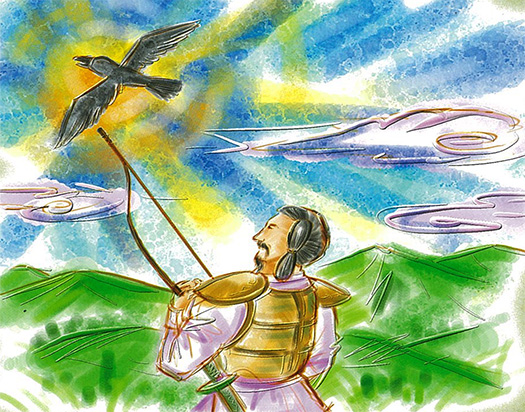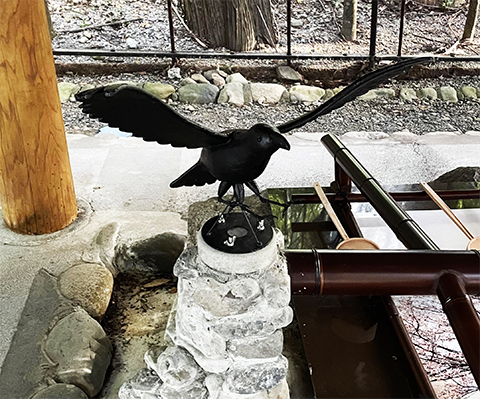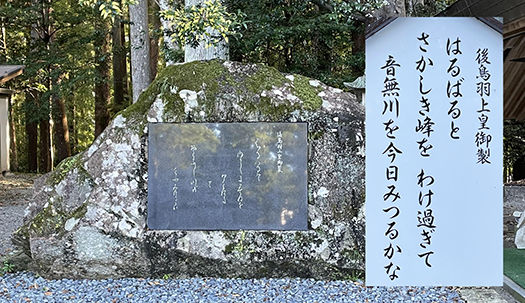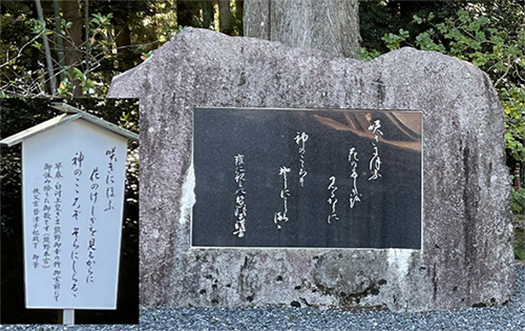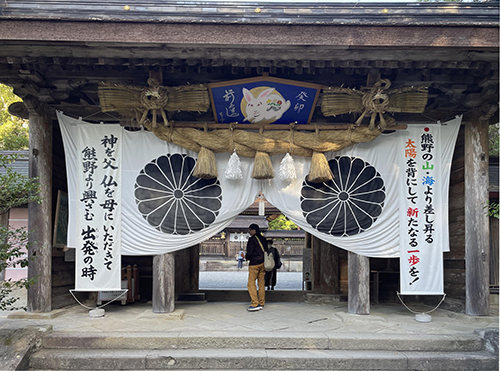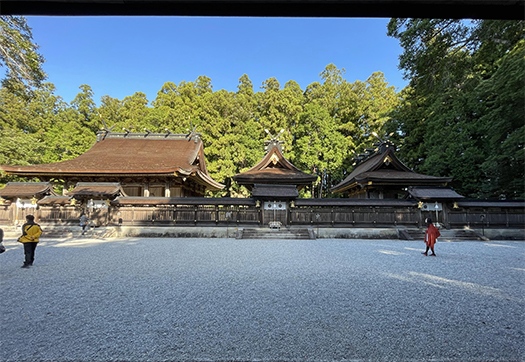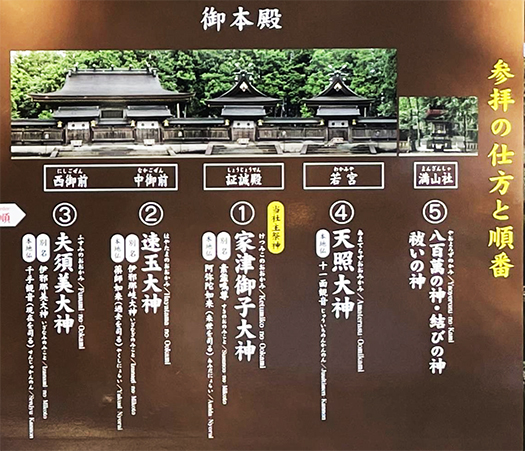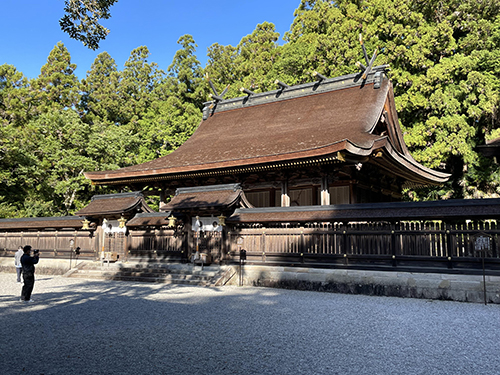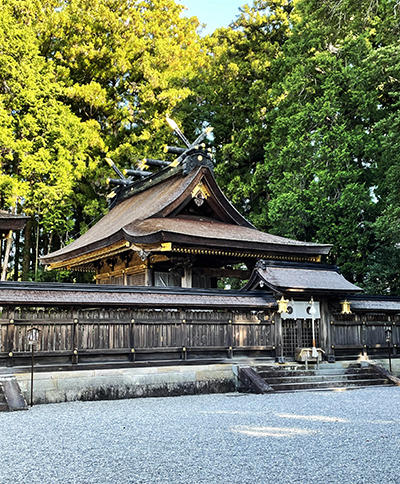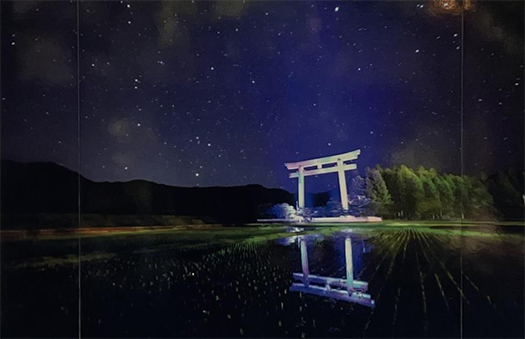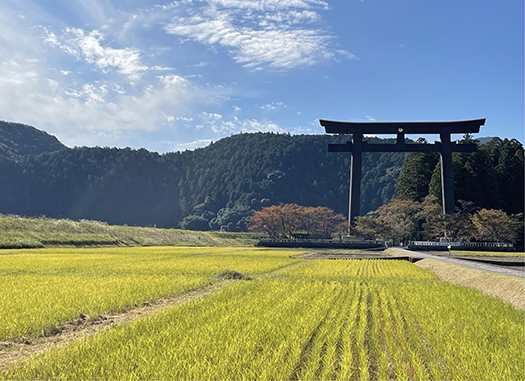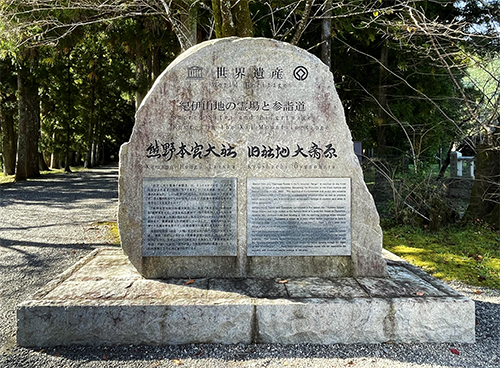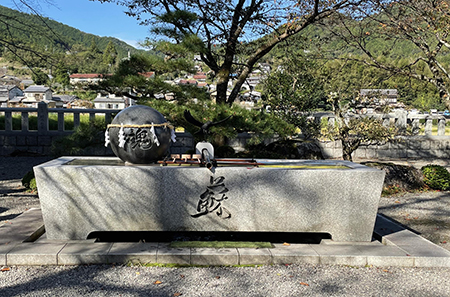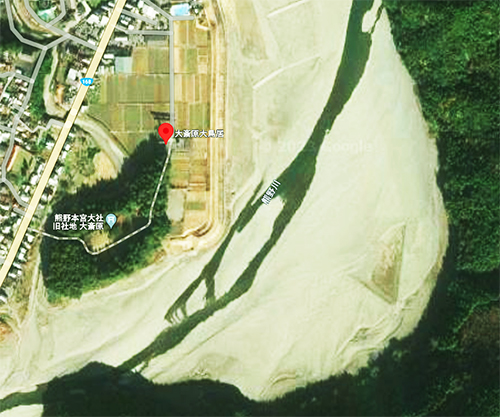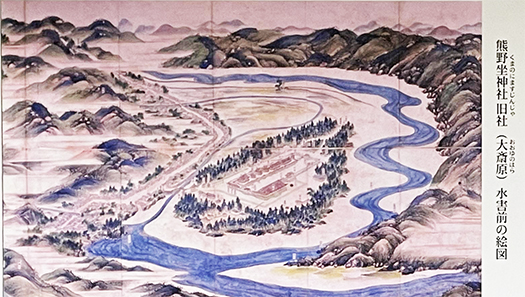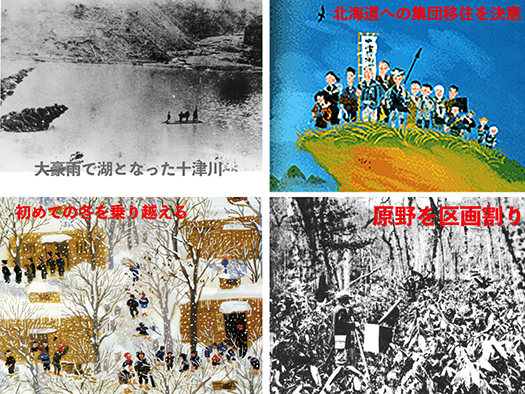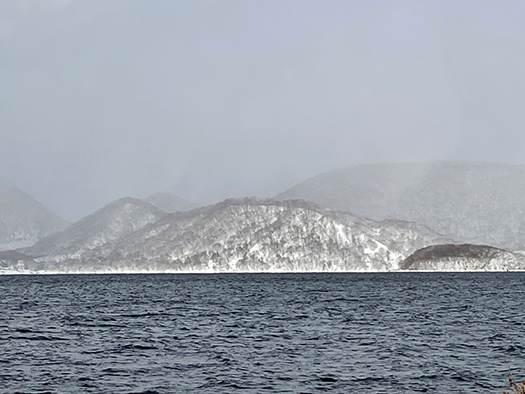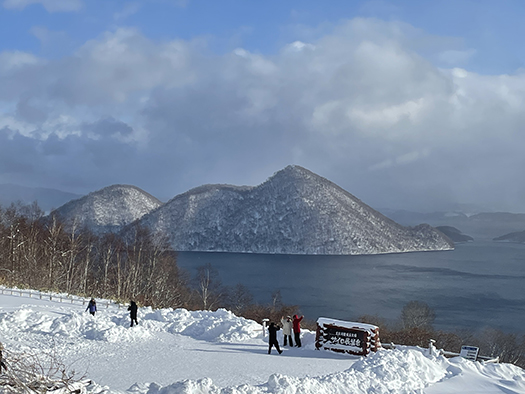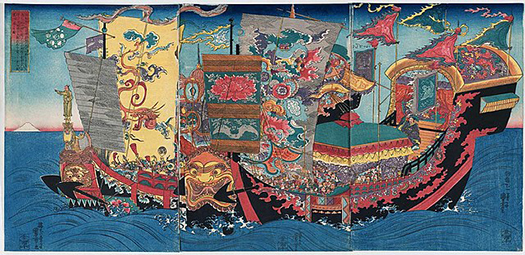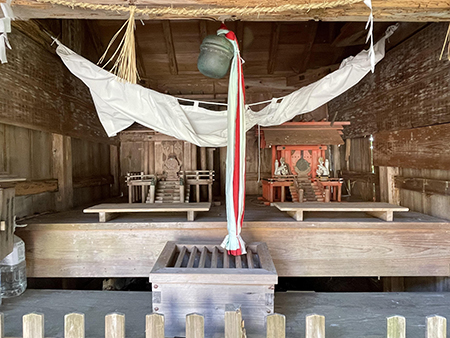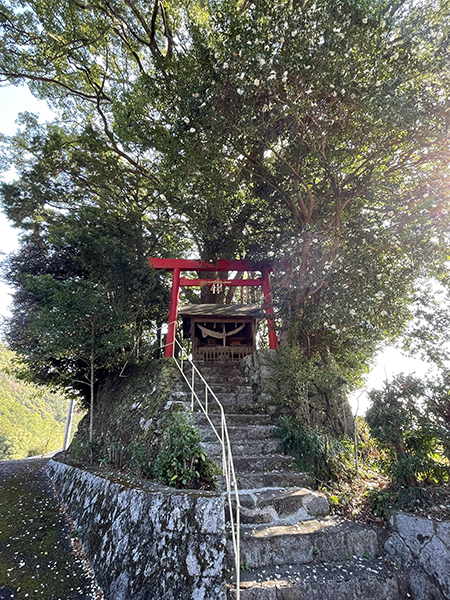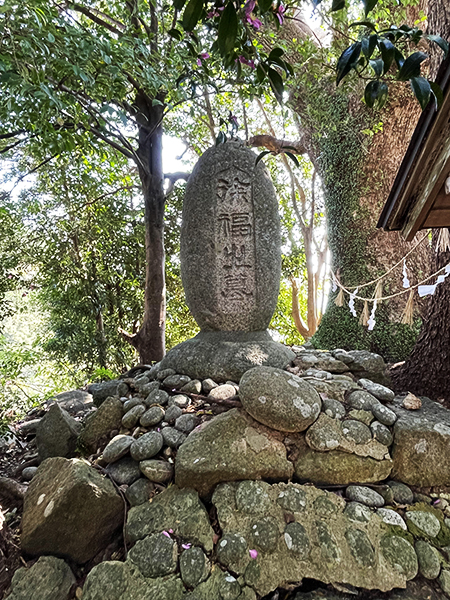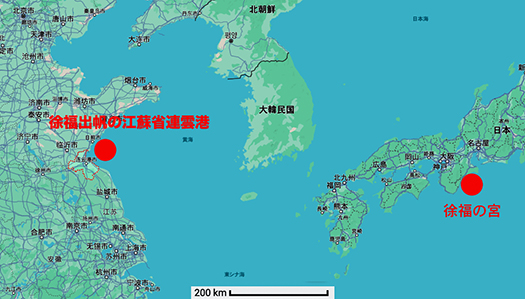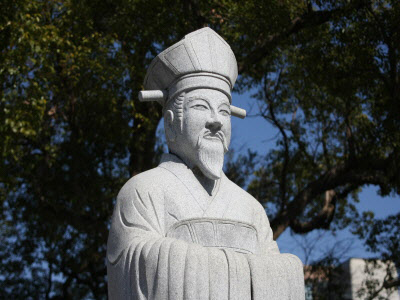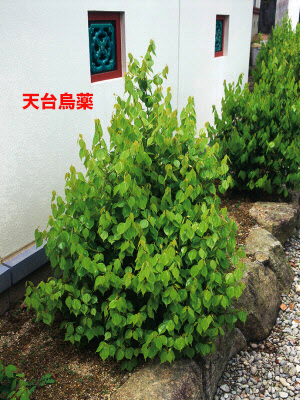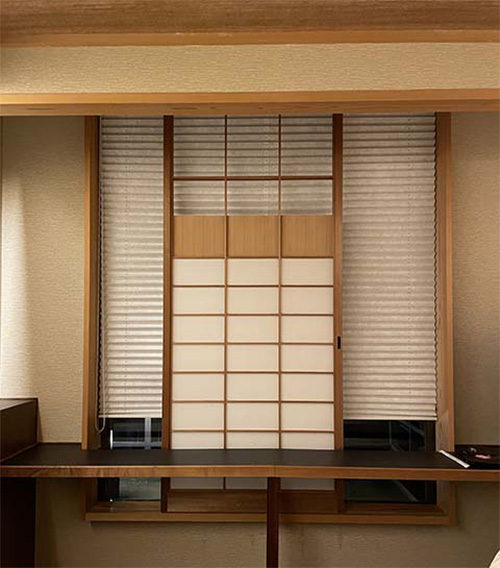
本日、閑話休題。皇統神話シリーズは小休憩。
高齢者になって来たので休暇の取り方についてはある程度自由度が高まってきております。正月の休暇をやや遅らせ、いま、温暖地をジャーニー中。旅行の訪問先についてはそれぞれ好みが反映されるものでしょう。海外もいいけれどわたしはやはり、日本語と文化的価値感を共有できる日本の温暖地が好きです。歴史など背景理解の深化もあって楽しみの奥行きが増す。同じ民族の昔人の思いというものがDNA的に「伝わってくる」ので海外旅行では得られない共感が、それぞれの地で感受できる。
そうすると必然的にその地域の「冬場の」気候風土に触れることになる。
とにかく建築が寒い(笑)。
最近は温暖地域でも建物の断熱気密の進化が大いに叫ばれてきてはいますが、北海道人が真冬の温暖地に行くと、そのあまりの寒冷対応の認識格差に驚かされた。九州あたりのリゾートホテルで、朝目覚めたら「これでもか」とばかりに開放的な窓面がびっしりと結露してすごい結氷に驚かされた。真冬には九州でも最低気温が零下になることもあるので、単板硝子1枚・アルミサッシ、しかも眺望最優先で巨大な「パノラマビュー」を目指していることが逆に際だってしまう。ふるえて眠る。
夏場の温暖蒸暑の気候条件にすべてがアジャストされていることは理解できるけれど、お正月という休暇時期は動かしにくいので、どうしてもこういうことになってしまう。
で、上の写真の窓辺であります。
コンクリート建築であって暖房は大型のエアコンなので、一定の室温制御はできている。駆体についてはまぁそこそこなのでしょう。で、窓・開口部も巨大開口ということもなく、ほどよい。昼間はそれでよかったのですが、夜間になってきて、硝子窓と障子建具(写真は引き戸の2枚が重なった状態)の間にブラインドが装置されていたので、そのブラインドを下げてみた。
「あれ」であります。
ブラインドが窓の下部までカバーできずに1/5くらいが単板硝子素通し。ブラインドもあったので、一応3層の開口部仕様で温暖地なりに温熱居住性には配慮しているのか、と思っていたわたしが甘かったようです(笑)。そしてよく確認したら、障子建具も上の1/3ほどは障子紙が張られていないで、木枠格子だけのスカスカ仕様。一応見てくれは「3層」の建具仕様ではあるけれど・・・であります。結局、3層の仕様ではあるけれど熱的には単板硝子からの冷気が入り込み放題(泣)。
しかしそれにしても、ブラインド(ひょっとしてハニカムかと期待もしたのですがただの遮光だけのタイプ)の下1/5がカバーされていないのは、とナゾであります。
普通に考えれば建築の側と発注先ブラインドメーカー間の連絡ミスで「まぁしょがないなぁ」ということでヨシとしたものか。しかしそれはいくらなんでもホテル発注側が承諾しないでしょう。
そうすると、障子の1/3が素通しであることとの「関連性」が疑われる。
3層の被覆構造が「やりすぎ」とでも考えて「余白を作る」みたいな設計趣旨だったものか。
どうにも、疑問のタネがふくらんで、建築探偵団的な意欲ムクムクであります(笑)。
あ、でもまぁ、1日だけのエトランゼなので「寝具爆使いと暖房エネMAX化」で対応して、健康を害するには至りませんでした。なんもさ、余裕のユーザーとしての対応。なお、ポリシーとして決してどこどこと特定できるようには表現致しません。あしからず。
English version⬇
A cold-weather resort hotel in a warm-weather area with the nosy eyes of a cold-weather person
I thought it was a triple structure of blinds and shoji screens against a single-pane glass window, but, well…. It’s a very strange finish, and I have my doubts…
Today, a quiet break. A short break in the Imperial Mythology series.
As I am getting older, I have some more freedom in how I take vacations. I have delayed my New Year’s vacation somewhat and am now on a warm-weather journey. I am sure that each person’s preferences will be reflected in the places he or she visits. Overseas is fine, but I prefer the warmer climates of Japan, where I can share the Japanese language and cultural values. The depth of enjoyment is enhanced by a deeper understanding of history and other backgrounds. The feelings of the people of the past of the same ethnic group are “transmitted” to me in a DNA-like way, so I can feel empathy in each place that I cannot get when I travel abroad.
This inevitably brings us into contact with the “winter” climate of the region.
Anyway, the architecture is cold (laughs).
Recently, there has been a great deal of talk about the evolution of building insulation and airtightness even in warmer regions, but when Hokkaido residents go to warmer regions in the middle of winter, they are surprised at the disparity in their perception of the response to cold temperatures. When I woke up in the morning at a resort hotel in Kyushu, I was surprised to see the open windows covered with ice and condensation. In midwinter, even in Kyushu, the minimum temperature can drop below zero, so the single sheet of glass with aluminum sashes and the huge “panoramic view” that is the top priority for the view is a real turn-off. Sleep in a shivering manner.
I understand that everything is adjusted to the warm and humid climate in summer, but it is difficult to move during the vacation season of New Year’s, so this is what I have to do.
So, this is the window in the photo above.
Since this is a concrete building and the heating is by a large air conditioner, the room temperature is under constant control. As for the building’s exterior, well, it must be there. And the windows/openings are moderate, not huge openings. During the daytime, it was fine, but at nighttime, blinds were installed between the glass windows and shoji fittings (two sliding doors are overlapped in the photo), so I lowered the blinds.
It is “that.”
The blinds did not cover the bottom of the window and about 1/5 of the window was bare single-pane glass. Since there were blinds, I was naive to think that the triple-opening specifications would take care of thermal habitability in a warm climate (laugh). (Laughs.) And when I checked carefully, I found that the top 1/3 of the shoji fittings were not covered with shoji paper, but only wooden latticework. Although the fittings were made to look like “triple-layered” fittings, they were not. After all, although it is a three-layered fixture, the cold air from the single-pane glass can enter the room as much as it likes (cries).
But still, it is a puzzle that the bottom 1/5 of the blinds (which I expected to be honeycomb blinds, but they are just light-shielding type) are not covered.
Normally, I would have thought that it was a miscommunication between the architect and the blinds manufacturer, and that it was “just as well. However, the hotel would not agree to that.
If so, the “relevance” of the fact that 1/3 of the shoji screens are bare is questionable.
Was the design intent to “create a blank space” because they thought that the three-layered cladding structure was “too much”?
I am filled with questions, and I am very eager to be an architectural detective (laugh).
But, well, since it was only a one-day etrangement, I was able to cope with it by “using the bedding explosively and maxing out the heating energy,” and it didn’t harm my health. I am a user with plenty of time to spare. As a matter of policy, I will never express the specifics of where I am or where I am going. Please understand.
Posted on 1月 20th, 2024 by 三木 奎吾
Filed under: 住宅取材&ウラ話 | No Comments »


